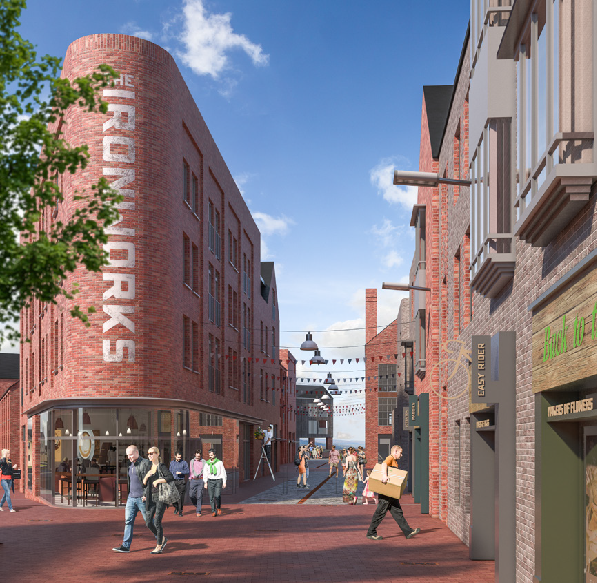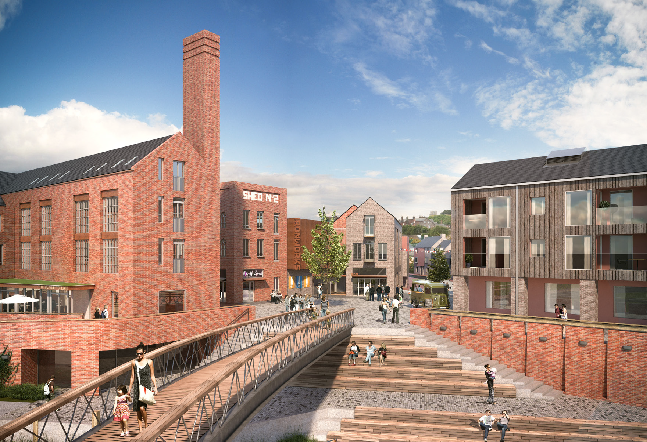Theme: Housing (in OPE), Health and social care (in OPE), Defence
The challenge
The North Street Quarter (NSQ) will be a vibrant, mixed-use neighbourhood which will regenerate the area around North Street and the former Phoenix industrial estate in Lewes, East Sussex and will reconnect the area to the heart of the town.
The project is a £180 million mixed-use regeneration scheme delivering 416 homes. The development plans are designed to be sustainable and sympathetic to its location on the banks of the River Ouse and within the South Downs National Park. It will also deliver high levels of affordable housing, provide vital flood defences, create a riverside walkway, create flexible employment space, and provide a public car park and a healthcare hub serving 26,000 patients.
In order to maximise the opportunity for the wider scheme and ensure its viability, the existing Lewes community fire station, which occupies part of the site, needs to be relocated to release land for development.
The vision
The preferred relocation opportunity is making use of NHS-released property at Springman House, located just outside the NSQ regeneration area. This site was acquired from the NHS and South East Coast Ambulance Service by Lewes District Council in 2017. It is adjacent to the recently constructed police station, which presents an ideal opportunity for a blue light hub whilst also enabling the wider NSQ regeneration scheme.
Through partnership working supported by the OPE regional team, the council has broadened discussions around the future potential of the Springman House site beyond those with East Sussex Fire and Rescue Service to include discussions with Sussex Police. This includes working through shared requirements around training areas, vehicle access and security issues. An ambulance community response post will also be provided as part of the new facility.
The Springman House project will relocate the existing community fire station to a new enhanced blue light services hub integrating fire, police and ambulance services. Modern and innovative design will enable services to share spaces and work more efficiently utilising the latest technology. The co-location will:
• unlock and enable the development of 416 new homes through the £180 million NSQ regeneration site in Lewes
• enable blue light services in Lewes to be co-located, delivering public service efficiency savings of £25,000 per year in line with OPE objectives.
Action taken/planned
In 2016, OPE fully supported the project, funding the feasibility study and cost advice for Springman House. A bid to the Coast to Capital LEP Local Growth Fund was successful, with £2 million awarded to overcome the viability gap for the Springman House proposal. The purchase of Springman House was completed early in 2017, and in June that year Lewes District Council authorised the design and construction of the new blue light services hub. A further £150,000 was allocated to help fund feasibility and design work for the new integrated health centre which needs to be provided as part of the scheme.
Outcomes
OPE investments will help unlock the £180 million NSQ regeneration site, with the following significant benefits:
• 416 new homes, of which 40 per cent will be affordable
• 13,000 square metres of new workspace, including subsidised creative workspace
• 488 jobs
• a new modern health centre for 26,000 patients
• strategically important flood defence works, completing the defence of Lewes
• a public square hosting contemporary restaurants, a two-tier riverside promenade and extensive new cycle paths and footpaths.
In addition, the Springman House project will deliver:
• a shared blue light service hub for the centre of Lewes, including community rooms, office space, equipment rooms and storage
• a £25,000 reduction in annual running costs and more efficient use of buildings.


